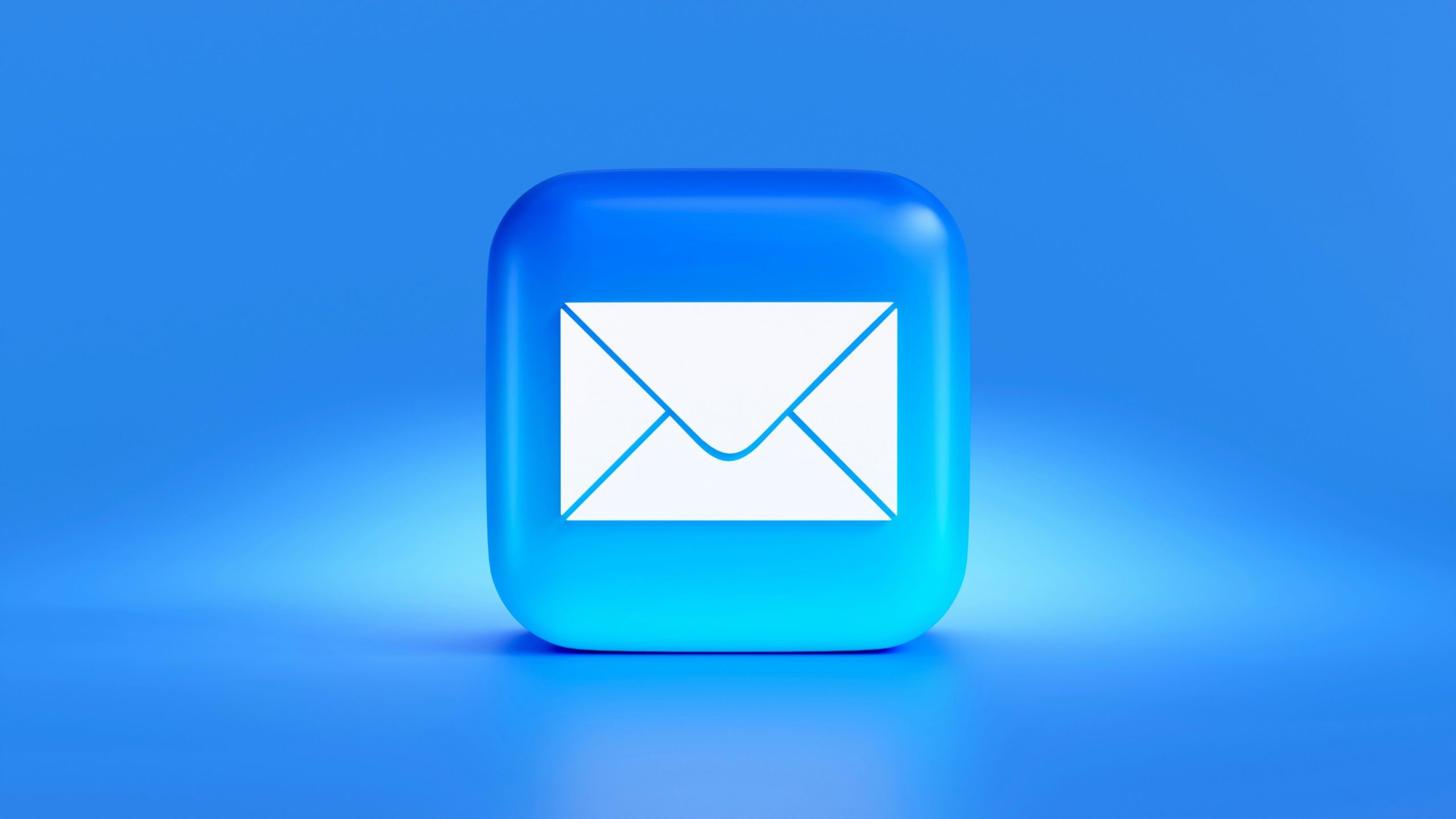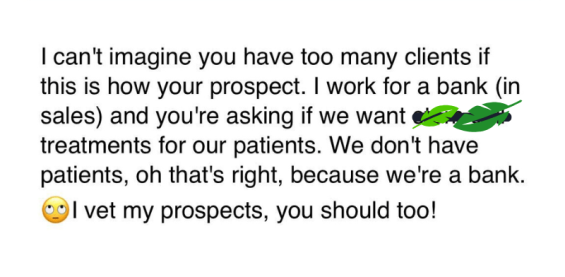
5 Skills that Actually Get You Hired in Sales
Let’s be honest about something: most sales interview advice is useless. These five tips are anything but.
UPDATED: 3/20/2025

This step-by-step guide will show you how to protect your sender reputation, improve deliverability, and keep your emails where they belong: front and center.
Let’s get started, shall we?
Email deliverability refers to the ability to land your emails in the recipient’s inbox instead of being blocked or landing in the spam folder (ew). It is THE key metric for determining how well your email campaigns are performing.
Different factors like sender reputation, email authentication, and the quality of your content can affect it as well.
Most people fail before they can even start. To really maximize your chances of landing in an inbox, it’s suuuper important to set these up correctly.
Here are a few tips about inboxes:
Switching up which inboxes you use to send emails helps you avoid getting anyone’s inbox flagged as spam.

SPF, DKIM, and DMARC are important email authentication protocols for proving your emails are legitimate. Without them, it could be real tough sledding trying to find an inbox.
🦜 Tip: Check out our Ultimate DNS Setup Guide to configure SPF, DKIM, and DMARC settings for Gmail sending domains
“Lead verification” is checking to make sure that the email address you want to send to exists and is still active.
Validating your lead lists is kind of a non-negotiable these days. Data providers aren’t obligated to check if the emails they are selling you are legit, so without validation, you could be firing off dozens—if not hundreds—of emails to dead-ends.
Sending emails to dead leads (aka invalid leads) could seriously hurt your sender reputation, and as we’ve already discussed, a poor sender rep makes it harder to find inboxes.
What does that mean for you? Well, it means you gotta do the work yourself. Not to worry though; it’s not difficult work at all.
🦜 Tip: Sending emails to prospects that are NOT your ICP could kill your campaign and reeeally piss people off. Try to avoid replies like this👇

Personalization isn’t just about throwing in someone’s name—it’s about creating content that grabs attention and actually gets read.
Here’s how to keep your emails engaging and out of the spam folder
Don’t know where to start with email copy? Check out Eight Steps to Writing Killer Cold Email Copy.
🦜 Tip: Try A/B testing (a feature built into Campaign Builder) to experiment with different subject lines, email lengths, and tones. Track open and reply rates to find what works.
Sending emails isn’t just about hitting “send”; it needs to be done the right way. Managing how and where your emails go can make or break your deliverability.
Here’s how to send smarter, not harder:
What it means: Gradually increase the volume of emails sent from a new domain or email address.
Why it matters: Sudden high-volume sending can trigger spam filters.
How to do it: Start with a low daily send limit (e.g., 10–20 emails) and slowly increase over a few weeks. Focus on high-quality, engaged contacts to build a solid sender reputation.
What it means: Distribute your campaigns across multiple accounts to prevent overusing a single account.
Why it matters: Prevents overusing any one domain, lowering your risk of spam flags.
How to do it: Set up multiple sending accounts and rotate them strategically to avoid overloading any single account. If you’re using Parakeet, our Smart Throttling feature does this for you automatically, so you never need to worry.
🦜 Tip: Connect multiple accounts and use account rotation to scale your campaigns quickly while maintaining super high deliverability (and sender reputation)
Email laws exist to protect recipients, and staying compliant is key to building trust and keeping your emails in the primary inbox.
Here’s how: Every email should include a clear unsubscribe option, such as a “Reply to opt out” footer. This keeps you compliant with GDPR, CAN-SPAM, and other regulations.
🦜 Tip: Be Transparent. Include your company’s name and physical address in the footer to establish trust and comply with legal standards.
Tracking campaign performance is the only way to know how to improve your outreach and get better results.
Here’s how to monitor key metrics and make adjustments that will fill your pipeline:
Open Rates: Measure how many recipients are opening your emails. Low rates could indicate issues with subject lines or deliverability.
Sidebar: Tracking open rates has been a touch controversial recently. Some folks argue that tracking opens hurts deliverability, while others say it has zero effect.
Reply Rates: You can’t book a meeting or a demo unless your prospects reply, so this one is pretty dang important. High reply rates signal engaging content and good targeting. The higher the better here.
Bounce Rates: Measures the number of emails that are “bounced back” or are undeliverable.
There are two different types of bounces –
Keep this below 2%, and your positive sender reputation will be a-okay 👌
🦜 Tip: Use the analytics dashboard to track these metrics and make the adjustments needed to improve these metrics
Your sender reputation is EVERYTHING. Here’s how you can keep it clean:
Use Verified Domains: Always send from a domain you control and have authenticated. This builds (and maintains) trust with ESPs.
Engage Your Audience: Encourage replies and interactions. Parakeet’s MailHub makes managing these conversations seamless so that shouldn’t be a problem for you.
Avoid Purchased Lists: Sending to low-quality or outdated lists harms your reputation. Better lists, better results.
🦜 Tip: Check out our Keys to a Sweet Sender Reputation link for more info on building and maintaining a good reputation
You’ve landed in the inbox. Wooo! 🥳
It’s been a few days with no replies. Not great. 🥺
Mastering the art of the follow-up is what separates the amateurs from the professionals.
Automate Follow-Up Sequences: Use Parakeet to set up personalized follow-up sequences based on recipient actions, like “no reply” or “opened but didn’t respond.”
The Right Timing: Don’t blast your prospects with a constant stream of emails. Space out follow-ups to stay top-of-mind but do NOT annoy them.
Keep it Short and Relevant: Be concise and to the point. Highlight a new insight or offer a different angle on your original message. And for the love of all things good… don’t just send “any thoughts?”
Use Smart Labels in MailHub: Tag responses to help prioritize follow-ups, like “Interested” or “Not Interested,” so you can stay organized and focused.
Not a big reader? We get it. Kick back and let Cynthia Handal show you how to protect your sender reputation, improve deliverability, and keep your emails out of the spam folder.
✅ Authenticate your domain
✅ Configure your SPF, DKIM, and DMARC settings
✅ Validate your email list (with our email validator tool)
✅ Warm up new accounts
✅ Avoid spam triggers, use good subject lines, and personalize email content
✅ Give clear opt-out options
✅ Authenticate your domain
✅ Configure your SPF, DKIM, and DMARC settings
✅ Validate your email list (with our email validator tool)
✅ Warm up new accounts
✅ Avoid spam triggers, use good subject lines, and personalize email content
✅ Give clear opt-out options
Try Parakeet today

Let’s be honest about something: most sales interview advice is useless. These five tips are anything but.

Sales managers are looking for people who can systematically generate pipeline from scratch. Cold email experience has become the unofficial litmus test for serious sales candidates, and for good reason. Let me show you why hiring managers prioritize it, and how you can use this to your advantage.
Privacy Policy | © 2025 All rights Reserved | Terms of Use
© 2024 All rights Reserved